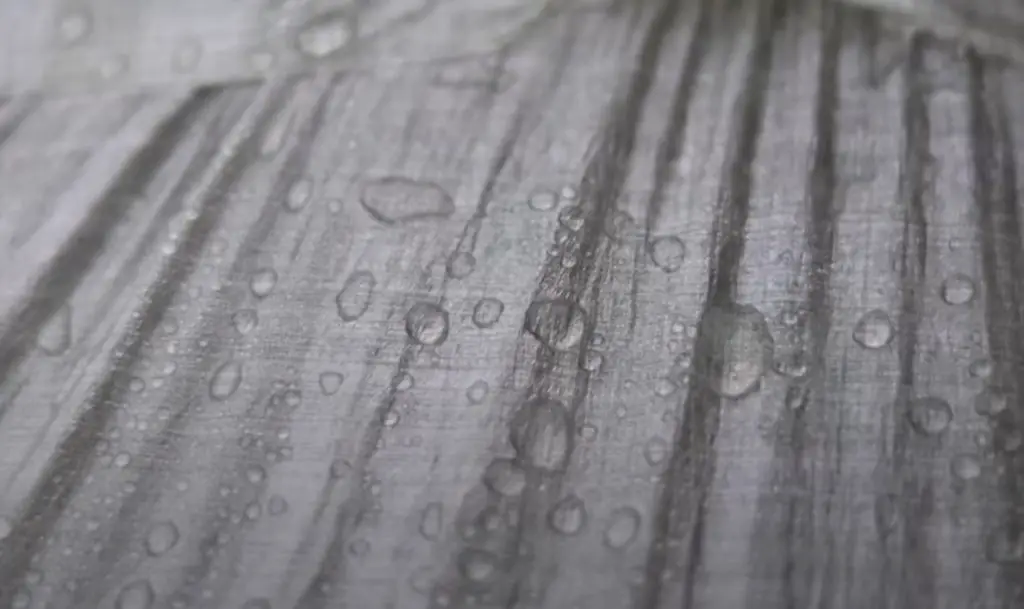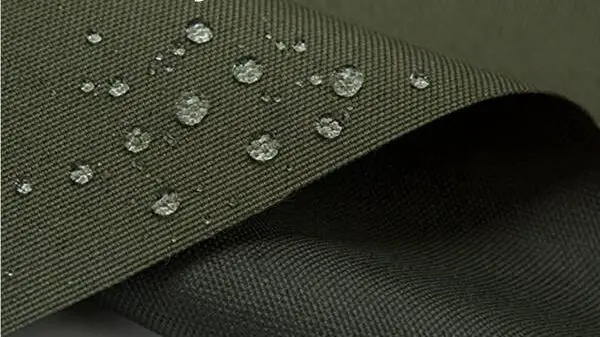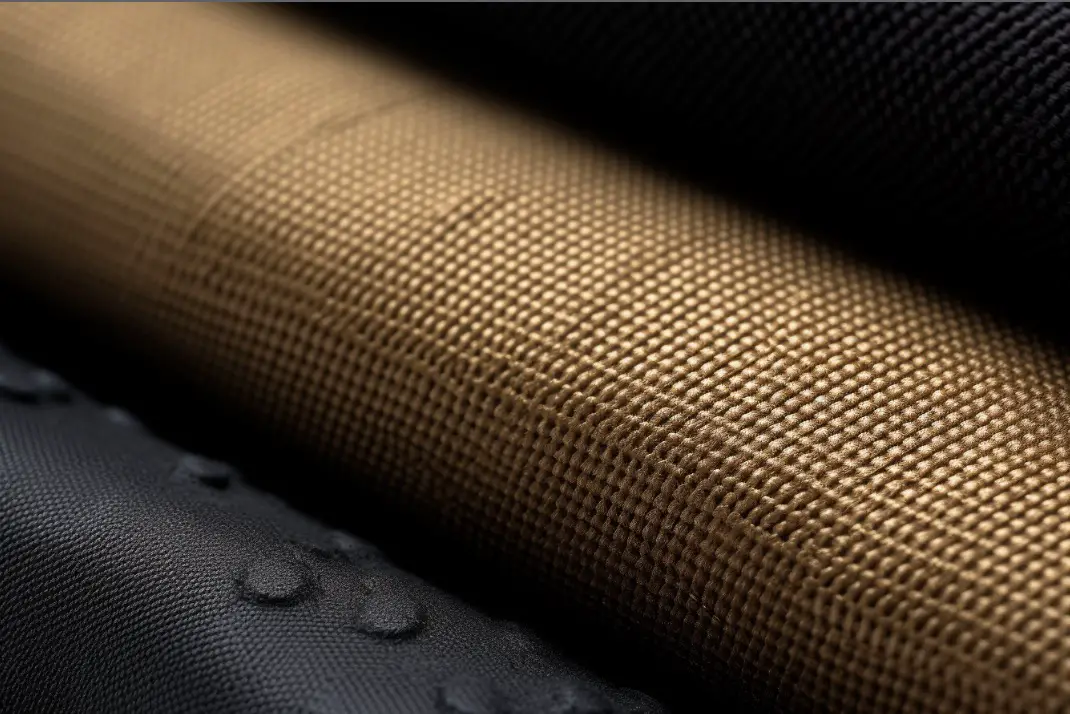Dyneema is not polyester. Though both materials are synthetic fibers, Dyneema is an ultra-high-molecular-weight polyethylene (UHMWPE) while polyester is a polymer made from polyethylene terephthalate (PET).
Dyneema is known for its exceptional strength-to-weight ratio, making it a popular choice for various applications, from outdoor gear to body armor.
Polyester, on the other hand, is widely used in clothing, home furnishings, and industrial fabrics due to its durability and versatility.
What is Dyneema?
Dyneema was developed in the 1970s by Dutch chemist Dr. Albert Pennings. It is a brand of UHMWPE, which is a type of thermoplastic made from extremely long chains of polyethylene molecules.

The unique molecular structure of Dyneema gives it unparalleled strength and durability compared to other synthetic fibers.
Properties of Dyneema
Dyneema has several impressive properties that make it stand out from other synthetic fibers:
1.High strength-to-weight ratio: Dyneema is 15 times stronger than steel and 40% stronger than Kevlar on a weight-for-weight basis. This means that it can provide exceptional strength while remaining lightweight.
2.Abrasion resistance: Dyneema has excellent abrasion resistance, making it a preferred choice for applications where wear and tear are a concern.
3.UV resistance: Dyneema has high resistance to ultraviolet (UV) radiation, ensuring that it maintains its strength even when exposed to sunlight for extended periods.
4.Chemical resistance: Dyneema is resistant to most chemicals, including acids, alkalis, and solvents, making it suitable for use in harsh environments.
5.Low stretch: Dyneema has minimal stretch, which makes it ideal for applications where stability and precision are required.
6.Buoyancy: Dyneema is buoyant in water, which can be a valuable feature for marine and water-based applications.
What is Polyester?
Polyester was first developed in the 1940s by British chemists John Whinfield and James Dickson. It is a synthetic polymer made from polyethylene terephthalate (PET), which is derived from petroleum.

Properties of polyester
Polyester has several desirable properties that make it a popular choice for a wide range of applications:
1.Durability: Polyester is a strong and durable material, making it suitable for applications where longevity is important.
2.Resistance to wrinkles: Polyester is resistant to wrinkles and maintains its shape well, making it a popular choice for clothing and home furnishings.
3.Moisture-wicking properties: Polyester has the ability to wick moisture away from the body, making it a popular choice for athletic wear and outdoor clothing.
4.Easy care: Polyester is easy to care for and can be machine-washed and dried without losing its shape or color.
Comparing Dyneema and Polyester
Polyester and Dyneema are two popular materials used in outdoor gear, each with its own set of characteristics and advantages. Here are the main differences, pros, and cons of polyester and Dyneema:
Polyester:
Polyester is a synthetic fiber known for its durability and versatility.It is commonly used in various outdoor gear applications, including backpacks, tents, and clothing. Here are the pros and cons of polyester:
Pros:
- Durability: Polyester is highly resistant to abrasion, tearing, and stretching, making it a long-lasting choice for outdoor gear.
- Water resistance: Polyester fibers have inherent water-resistant properties, which means they are less likely to absorb moisture and dry relatively quickly.
- Cost-effective: Polyester is generally more affordable compared to Dyneema, making it a popular choice for budget-conscious outdoor enthusiasts.
- Wide availability: Polyester is readily available in a variety of colors, patterns, and textures, allowing for greater customization options.
Cons:
- Heavyweight: Polyester tends to be heavier than Dyneema, which can add weight to your outdoor gear. This can be a disadvantage for activities that require lightweight equipment, such as ultralight backpacking.
- Limited strength-to-weight ratio: While polyester is durable, it does not have the same strength-to-weight ratio as Dyneema. This means you may need thicker or heavier polyester materials to achieve the same level of strength as Dyneema.
- Lower UV resistance: Polyester is prone to degradation when exposed to prolonged sunlight, which can weaken the material over time.
Dyneema:
Dyneema is a high-performance synthetic fiber known for its exceptional strength and light weight. It is commonly used in applications where strength and weight savings are crucial, such as climbing ropes, backpacks, and hammocks. Here are the pros and cons of Dyneema:
Pros:
- Strength-to-weight ratio: Dyneema is one of the strongest fibers available, offering significantly higher strength-to-weight ratio compared to polyester. This means you can achieve excellent strength and durability with minimal weight.
- Lightweight: Dyneema is exceptionally lightweight, making it ideal for activities that require carrying gear over long distances or where reducing pack weight is important.
- Low stretch: Dyneema has very low stretch properties, providing better load-bearing capabilities and stability in various outdoor gear applications.
- UV resistance: Dyneema has excellent UV resistance, making it more resistant to degradation from prolonged exposure to sunlight.
Cons:
- Cost: Dyneema is generally more expensive than polyester, which can make gear made with Dyneema more costly.
- Limited color options: Dyneema is typically available in limited colors, primarily white or grey, due to the manufacturing process. This can limit customization options for those who prefer a wider range of colors.
- Less abrasion resistance: While Dyneema is highly strong, it is not as resistant to abrasion as polyester. It may require additional protective measures or reinforcement in high-wear areas.
Ultimately, the choice between polyester and Dyneema depends on your specific needs and priorities. Polyester is a more cost-effective and versatile option suitable for general outdoor gear, while Dyneema offers superior strength-to-weight ratio and lightweight performance, making it ideal for activities where reducing weight is crucial.
While both Dyneema and polyester are strong materials, Dyneema is significantly stronger on a weight-for-weight basis. This makes it ideal for applications where lightweight strength is crucial, such as in body armor and outdoor gear.
Cost
Polyester is generally less expensive than Dyneema, making it a more cost-effective choice for many applications, especially in clothing and home furnishings.
Environmental impact
Both Dyneema and polyester are petroleum-based products, which means that their production contributes to the depletion of non-renewable resources. However, there are efforts to develop more sustainable versions of both materials, such as bio-based Dyneema and recycled polyester.
Common Applications for Dyneema and Polyester
Some common uses for Dyneema include:
1.Ropes and cordage: Dyneema’s high strength-to-weight ratio and low stretch make it an ideal choice for ropes used in sailing, climbing, and other applications.
2.Body armor: Dyneema is used in the production of bulletproof vests and other body armor due to its exceptional strength and lightweight properties.
3.Outdoor gear: Dyneema is used in various outdoor gear, such as backpacks, tents, and tarps, where lightweight strength is a priority.
Polyester applications
Some common uses for polyester include:
1.Clothing: Polyester is widely used in the production of clothing, from casual wear to athletic apparel.
2.Home furnishings: Polyester is commonly used in home furnishings such as curtains, upholstery, and bedding.
3.Industrial fabrics: Polyester is used in various industrial applications, including conveyor belts, hoses, and safety equipment.
Conclusion: Is Dyneema polyester?
In conclusion, Dyneema is not polyester. While both are synthetic fibers, they have different molecular structures, properties, and applications. Dyneema is an ultra-high-molecular-weight polyethylene (UHMWPE) known for its exceptional strength-to-weight ratio, while polyester is a versatile and durable material made from polyethylene terephthalate (PET). Some key differences between the two materials include:
1. Dyneema has a higher strength-to-weight ratio than polyester.
2. Dyneema is more abrasion-resistant than polyester.
3. Dyneema has better UV resistance than polyester.
4. Polyester is generally less expensive than Dyneema.
5. Polyester is more commonly used in clothing and home furnishings, while Dyneema is used in high-strength applications like body armor and outdoor gear.
6. Both materials are petroleum-based, but efforts are being made to develop more sustainable versions of each.
7. Dyneema is buoyant in water, while polyester is not.
8. Dyneema has low stretch, while polyester has some stretch.
9. Dyneema is resistant to most chemicals, while polyester may be less resistant to certain chemicals.
10. Both materials are used in various industrial applications, but their specific uses differ due to their unique properties.
FAQs
What is the difference between polyester and Dyneema?
Polyester is a synthetic fiber that is commonly used in clothing and textiles, while Dyneema is a high-performance polyethylene fiber that is used in a wide range of applications including ropes, cables, and protective gear due to its exceptional strength and durability.
What is the generic name for Dyneema?
The generic name for Dyneema is Ultra-High Molecular Weight Polyethylene (UHMWPE).
Is Dyneema the same as polyethylene?
Dyneema is a brand of ultra-high-molecular-weight polyethylene (UHMWPE), so while it is a type of polyethylene, it is not the same as traditional polyethylene.
Is Dyneema a polyester?
No, Dyneema is not a polyester. It is a high-performance polyethylene fiber.
Is Dyneema stronger than Kevlar?
Yes, Dyneema is generally considered to be stronger than Kevlar. Dyneema has a higher tensile strength and is more resistant to abrasion and cutting than Kevlar.
What is Dyneema made of?
Dyneema is made of ultra-high molecular weight polyethylene (UHMWPE) fibers.




